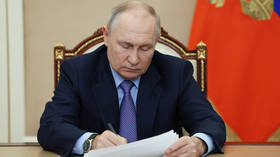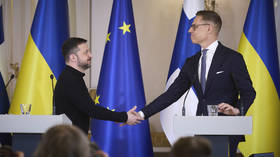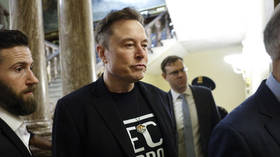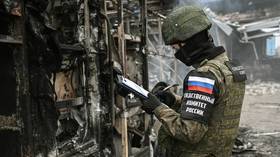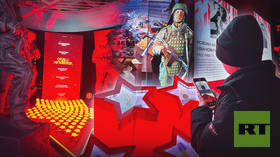Declassified files expose America’s double dealing in relations with revolutionary Iran from day one
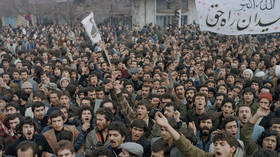
A new academic work, Worlds Apart, provides a documentary history of relations between Washington and Tehran between 1978 and 2018. It tells an extraordinary tale of coups, secret deals, sabotage and cooperation over four decades.
To mark its release, the National Security Archive has published a number of highly illuminating declassified files on the subject, several of which have never been seen before.
The document trail begins on January 3, 1979, when insurrection had been intensifying across Iran for almost a year. With the Western-installed and backed Shah still desperately clinging to power, but only just, an informal National Security Council meeting was convened. Present were President Jimmy Carter, Vice President Walter Mondale, National Security Advisor Zbigniew Brzezinski, Secretary of State Cyrus Vance, and CIA Director Stansfield Turner.
The insurrection was top of the agenda, with Carter asking the assembled whether the Shah should be asked to “step aside,” arguing that a “genuinely non-aligned Iran need not be viewed as a US setback.” For him, the “central issue” was “whether the Shah’s early departure is favorable to the US.” The proposal was supported by Turner and Vance, the former firmly asserting the leader “has to leave,” the latter suggesting such a move would give newly appointed Prime Minister Shapour Bakhtiar “more of a chance to succeed.”
By contrast, Brzezinski, a notorious hawk, made his opposition to the Shah’s removal clear in the strongest terms, warning of the “likely consequences” of his departure for “our friends in Iran,” given US disengagement “could plunge the country into anarchy or even civil war.” He argued that if the Shah was indeed prompted to leave, Washington should “compensate” with clear-cut commitments of US support for the country’s military seizing power “if worse comes to worst and violence is used.”
Also on rt.com Washington lets former NSA spooks who spied for the UAE off the hook – because the espionage program was a US creationIn other words, Brzezinski was advocating a military coup if the nascent revolution got too radical. In the end, a compromise was struck, with the Shah offered US sanctuary in return for abdicating, a senior general dispatched to Tehran to reassure military chiefs there that Washington “supports them completely, no matter what transient political circumstances may arise,” and “sensitive” equipment and personnel smuggled out of Tehran.
So it was that, 13 days later, the Shah fled. He bounced from country to country thereafter, but wasn’t accepted by the US until October 1979, and only then begrudgingly – he’d been abandoned by his former Western sponsor in the meantime. Carter nonetheless yielded to entreaties from David Rockefeller, chief executive of Chase Manhattan Bank, that he be treated for cancer by American physicians, despite warnings from the State Department that the US Embassy in Tehran would be seized if the Shah was granted entry.
Those dire forecasts proved correct, Iranian students storming the building and taking its occupants hostage the next month. Rockefeller had provided Iran with a dubious $500 million loan in 1978, from which the new Islamic republic made “substantial withdrawals” from its Chase Manhattan account the next year. It’s speculated that Rockefeller knew there would be repercussions for the Shah’s US admission, in turn precipitating the seizure of Iranian financial assets Stateside – and preventing Iran from accessing any more of the loan.
Fast-forward to 1986, with the Iran-Iraq war in its sixth year, having been started by Baghdad with prompting and succour from the Carter administration. By that point, the US was arming both sides in the conflict. Henry Kissinger remarked, “It’s a pity they can’t both lose.”
The official rationale for providing Tehran with weapons was securing the release of seven American citizens held hostage in Lebanon by Hezbollah – a group closely linked with the Islamic Revolutionary Guard Corps – in a secret deal. However, this was secondary to using profits derived from the sales to illegally bankroll the Reagan administration’s dirty war in Nicaragua, whereby fascist Contras were supported in their insurgency against the ruling Sandinistas by Washington in contravention of Congressional bans on support for the group.
Also on rt.com Is the CIA pushing forced vaccination on Americans via medical neglect?In October that year, senior National Security Council staffer Oliver North – a central figure in the resultant ‘Iran-Contra’ controversy – arranged a top-secret meeting with representatives of the guard corps in West Germany, to negotiate the “arms for hostages” deal. It was illicitly recorded, and a transcript of the discussion makes unambiguously clear that Washington was stuck in an intractable quandary.
On one hand, official desperation to free the captives produced a willingness to hand over any arms Tehran requested, including surface-to-air missiles and radar systems that would likely be decisive in the conflict. On the other, it was well understood that providing those munitions would make the US role in supplying them – in contravention of international arms embargoes – undeniable, and, in the process, link them inextricably to the release of hostages, which the White House was extremely keen to avoid.
“We have achieved Presidential authority for immediate air delivery of those items … And the President of the US has approved a secret operation to deliver these items immediately, [but] we are looking at a minimum of four shiploads of equipment,” North said. “Thousands of people in the US at a minimum would know about that. If we are going to do something like this, it has to be very clear that we are doing this because we are working for a military balance in the region, and a political solution.”
North reassured the Iranian contingent that Reagan had balked at the list of requested weapons he’d privately presented in the Oval Office on the basis it didn’t go far enough, and was willing to send far more, slamming the Council adviser for “thinking so small” and declaring, while banging his fist indignantly on his desk, that he “[wanted] to end that war on terms that are acceptable to Iran.” Yet “every time we get to the point where we can act in that regard, we find this obstacle sitting in the middle of the road,” he despaired.
Also on rt.com How Amazon, Facebook, Google and Microsoft wage a domestic War on Terror, and make billionsThat obstacle was publication of the deal – although a guards corps representative had bad news to impart: namely, that reports of the cloak-and-dagger deals had by that time long been circulating in Tehran, thanks to opponents of cooperation with the US of any kind. These revelations spread to the Western media, forcing Reagan to make a televised address denying the charges mere weeks after North’s meeting. During it, the president dismissed “stories about arms for hostages and alleged ransom payments” as “wildly speculative and false.”
A mere five months later, Reagan again spoke to the American people via TV. He reminded them of his earlier denial, rationalizing that while “my heart and my best intentions still tell me that is true,” disappointingly, “the facts and evidence tell me it is not.”
The newly declassified files suggest the president was well aware of the “facts and evidence” all along, and had wanted to expand the secret criminal ruse to a far more extreme extent than Tehran or his subordinates ever did. Given this followed just a few years after elements within Washington advocated a cloak-and-dagger military coup to prevent the formation of the Islamic Republic of Iran, one can only be reminded of Kissinger’s famous declaration that “America has no friends or enemies – only interests.”
Like this story? Share it with a friend!
The statements, views and opinions expressed in this column are solely those of the author and do not necessarily represent those of RT.







